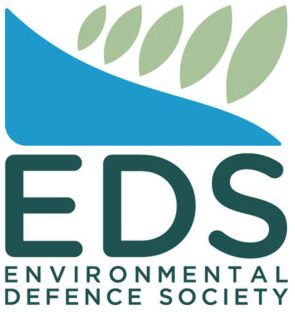Generous Donation Kickstarts Urgent Seabird Rescue Effort

BirdCare Aotearoa—Auckland’s primary Department of Conservation-permitted native bird hospital—has received a generous private donation from Auckland Councillor Julie Fairey, giving much-needed momentum to their emergency response for seabirds crash-landing across the city.
The gift arrives at a critical time, as BirdCare launches a public appeal to help save fledgling seabirds disoriented by urban lights. Each year, hundreds of young birds are rescued from beneath streetlights, next to CBD office buildings, on sports fields and even suburban porches—confused by the city glow during their first flights to sea.
The Givealittle campaign is
live now at
givealittle.co.nz/cause/lost-from-sea-light-impacted-seabirds
Aotearoa is the seabird capital of the world, home to 95 pelagic (ocean-roaming) species that return to our shores to breed. It’s a globally significant taonga—but one increasingly under threat. In autumn, surviving fledglings begin their long-haul maiden flights to sea. During this season, BirdCare sees a surge in Petrels, Shearwaters and Prions—many rescued by the public after crash-landing across the city.
Already this year, BirdCare Aotearoa has admitted 75 seabirds, with numbers expected to climb sharply over the coming weeks.
“It’s exhausting but urgent work,” said Hospital Manager Jonathan Lambregts. “These are high-care patients who need specialised feeding, fluid therapy, pain relief and rehabilitation. Yesterday alone, we admitted 13 new Cookies [Cook’s Petrels].”
This pivotal donation comes as a lifeline for the underfunded organisation. During a recent visit to BirdCare Aotearoa, Cr. Fairey shared that her 9-year-old son Thomas—an aspiring conservationist—was searching for ways to help protect native wildlife. The BirdCare team were deeply moved by Thomas’ passion, intelligence, and drive to make a difference.
Inspired by her son’s enthusiasm, Cr. Fairey made a personal donation to support the seabird rescue effort.
BirdCare Aotearoa is now urging the public to contribute what they can to help keep this vital work going. The organisation is also seeking long-term partnerships with environmentally conscious businesses, and encouraging Aucklanders to take simple, practical actions—like dimming outdoor lights—to help reduce seabird injuries.
“This is about more than just one bird or one season,” said Fundraising Manager Dr. Rashi Parker. “It’s about preserving the irreplaceable life of our moana and motu. Together, we can make sure these seabirds have a fighting chance to return to sea.”
General Manager Carl Ashworth also urges the public to stay alert for uncommon birds. “If you find one, call the DOC hotline for advice, and gently contain the bird using gloves and a towel in a ventilated box. Please don’t attempt to feed them.”
ABOUT BIRDCARE
AOTEAROA
BirdCare Aotearoa is Auckland’s main
Department of Conservation-permitted native bird hospital.
Based in Green Bay, the clinical team responds to avian
casualties from across Tāmaki Makaurau and
beyond—receiving patients from Te Tai Tokerau, Waikato,
Coromandel and Tauranga.
Operating as a charity without taxpayer funding, BirdCare relies on donations and contestable grants to continue serving the public and protecting our native birdlife.
Earlier this year, the organisation made the tough but necessary decision to prioritise clinical care for endemic and native species—ensuring limited resources deliver the best possible animal welfare and conservation outcomes.
Despite specialist recovery costs averaging $180 per bird, donations had dropped to just $12 per rescue—an unsustainable figure when treating approximately 6,000 patients each year.
Their recent public appeal has already been met with heartening support and aroha—showing how deeply valued BirdCare’s role is in Aotearoa's environmental landscape.


 Gordon Campbell: Papal Picks, And India As A Defence Ally
Gordon Campbell: Papal Picks, And India As A Defence Ally Waitangi Treaty Grounds: Anzac Day Commemorative Evening Service At The Waitangi Treaty Grounds
Waitangi Treaty Grounds: Anzac Day Commemorative Evening Service At The Waitangi Treaty Grounds Ministry For Culture And Heritage: New Zealand Flag Half-Masting To Mark The Passing And Funeral Of His Holiness Pope Francis
Ministry For Culture And Heritage: New Zealand Flag Half-Masting To Mark The Passing And Funeral Of His Holiness Pope Francis NZ Government: PM Sends Condolences On Passing Of Pope Francis
NZ Government: PM Sends Condolences On Passing Of Pope Francis NZDF: Battlefield Remains Unearthed By Wildfires In Gallipoli Covered Over By Kiwi Team
NZDF: Battlefield Remains Unearthed By Wildfires In Gallipoli Covered Over By Kiwi Team NZ Police: New Zealand Police team up with Z Energy, NZTA and ACC to remind Kiwis to drive safe this Easter
NZ Police: New Zealand Police team up with Z Energy, NZTA and ACC to remind Kiwis to drive safe this Easter NZCAST: NZCAST Leads Ongoing Cross-Agency Collaboration To Break Down Barriers For Survivors Of State Abuse
NZCAST: NZCAST Leads Ongoing Cross-Agency Collaboration To Break Down Barriers For Survivors Of State Abuse


